Editor’s Note: The Astana Times introduces a new series, Exploring Kazakhstan, City by City. We are setting out to unveil the rich diversity of Kazakhstan’s cities. Starting with Zhezkazgan and Shymkent, we continue our journey in the wonderful city of Taldykorgan. By exploring each city’s unique history and culture, we aim to bring you closer to the heart and soul of Kazakhstan.
ASTANA – Located in the picturesque southeastern expanse of Kazakhstan, the city of Taldykorgan embodies a blend of historical richness and contemporary vibrancy. The Astana Times offers a guide on how to spend a weekend for those interested in exploring sites in the heart of Zhetisu, one of the ancient cradles of civilization in Central Asia.
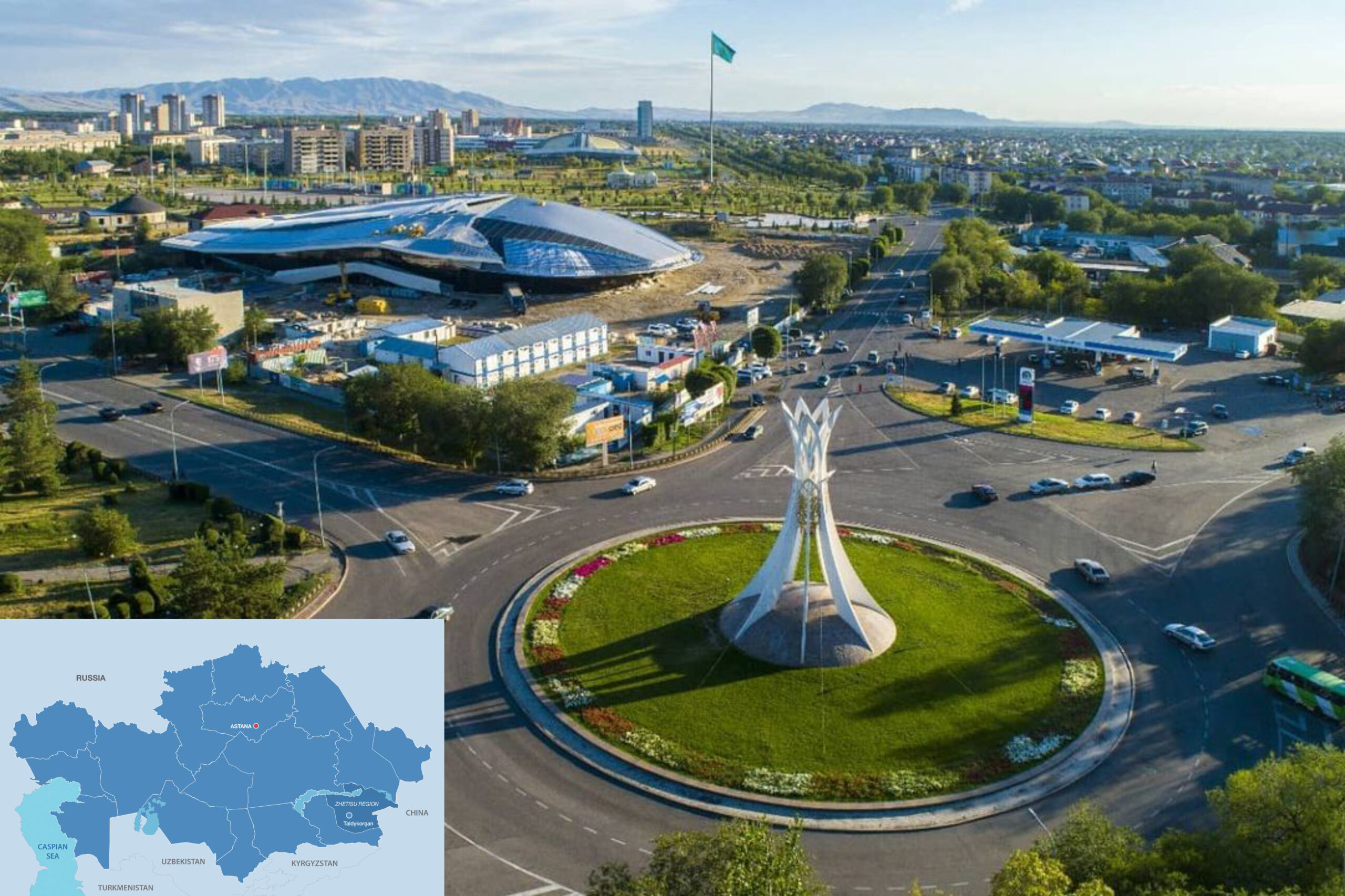
Taldykorgan. Photo credit: gov.kz. Click to see the map in full size. The map is designed by The Astana Times
According to data from the Bureau of National Statistics, the population of Taldykorgan reached 204,082 as of Jan. 1. The city, which is the administrative center of the recently established Zhetisu Region, has much to offer visitors.
There are hardly any high-rise buildings in Taldykorgan. Instead, it has its own charming atmosphere with streets immersed in greenery – the city has many parks and squares.
Taldykorgan Central Park and Zhastar Park
Start the day with breakfast at the Olivia bakery along Ormanov Street. After ordering a coffee to go, take a leisurely stroll through the Taldykorgan Central Park, which is just 20 minutes away from the cafe. The fresh air and public wi-fi will make a morning walk enjoyable.
Central Park was reconstructed in 2017. Local authorities installed torch lighting and architectural structures, laid cobblestone walkways, landscaped the area with flower beds and lawns, and planted trees.
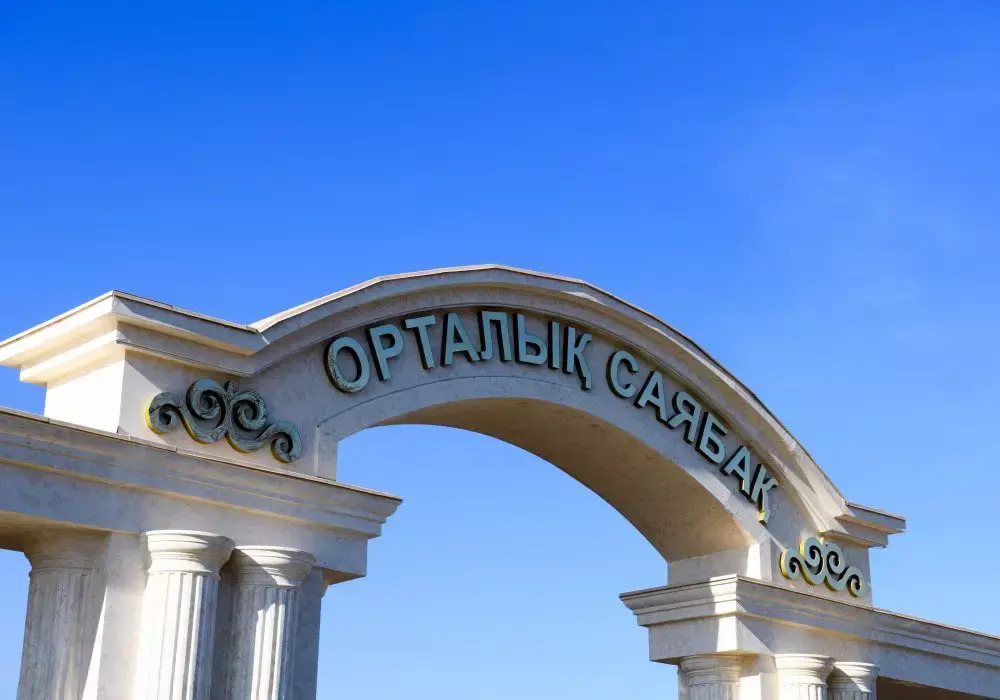
The entrance arch into Central Park. Photo credit: tengrinews.kz.
Another favorite recreation place for the public is Zhastar Park. It is also a platform for cultural and entertainment events, as well as a venue for Kazakh artists and masters to showcase their artworks.
In March, for example, it welcomed visitors to celebrate International Women’s Day. The program included performances of local artists, public games, quizzes, and commemorative gifts.
Tynyshpayev Regional Museum of Local History
To delve into the historical heritage of the city, one should visit the Tynyshpayev Regional Museum of Local History. Muhammedjan Tynyshpayev, whose legacy is honored by the museum’s name, is a pioneering Kazakh engineer.
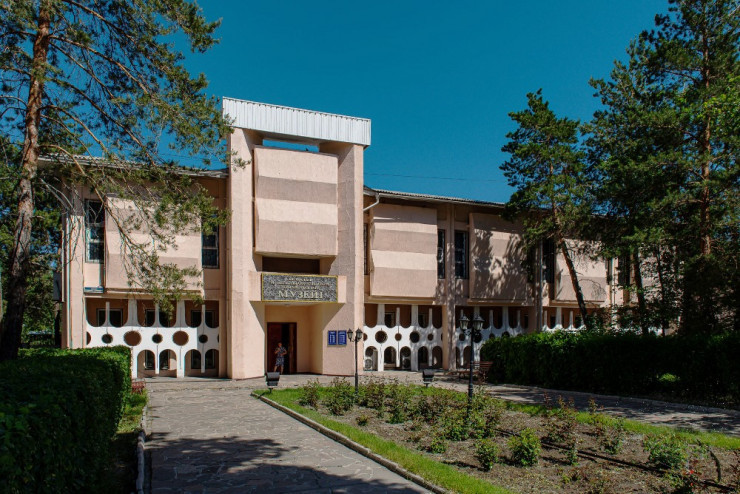
Tynyshpayev Regional Museum of Local History. Photo credit: tengritravel.kz.
He was also the Prime Minister of the Turkistan Autonomy, the first Central Asian democratic state structure, and a leading member of the Alash political movement that fought for the independence of the Kazakh state.
The museum, which was opened back in 1974, showcases a diverse array of exhibits, including archaeological discoveries from Zhetisu, national musical instruments, household utensils, and manuscripts.
Zhansugurov Palace of Culture and Literary Museum
Taldykorgan is the homeland of another great Kazakh public figure. Ilyas Zhansugurov made a significant contribution to the development of national poetic culture. Built in 1962, the Zhansugurov Palace of Culture was named after the prominent Kazakh poet three years later.
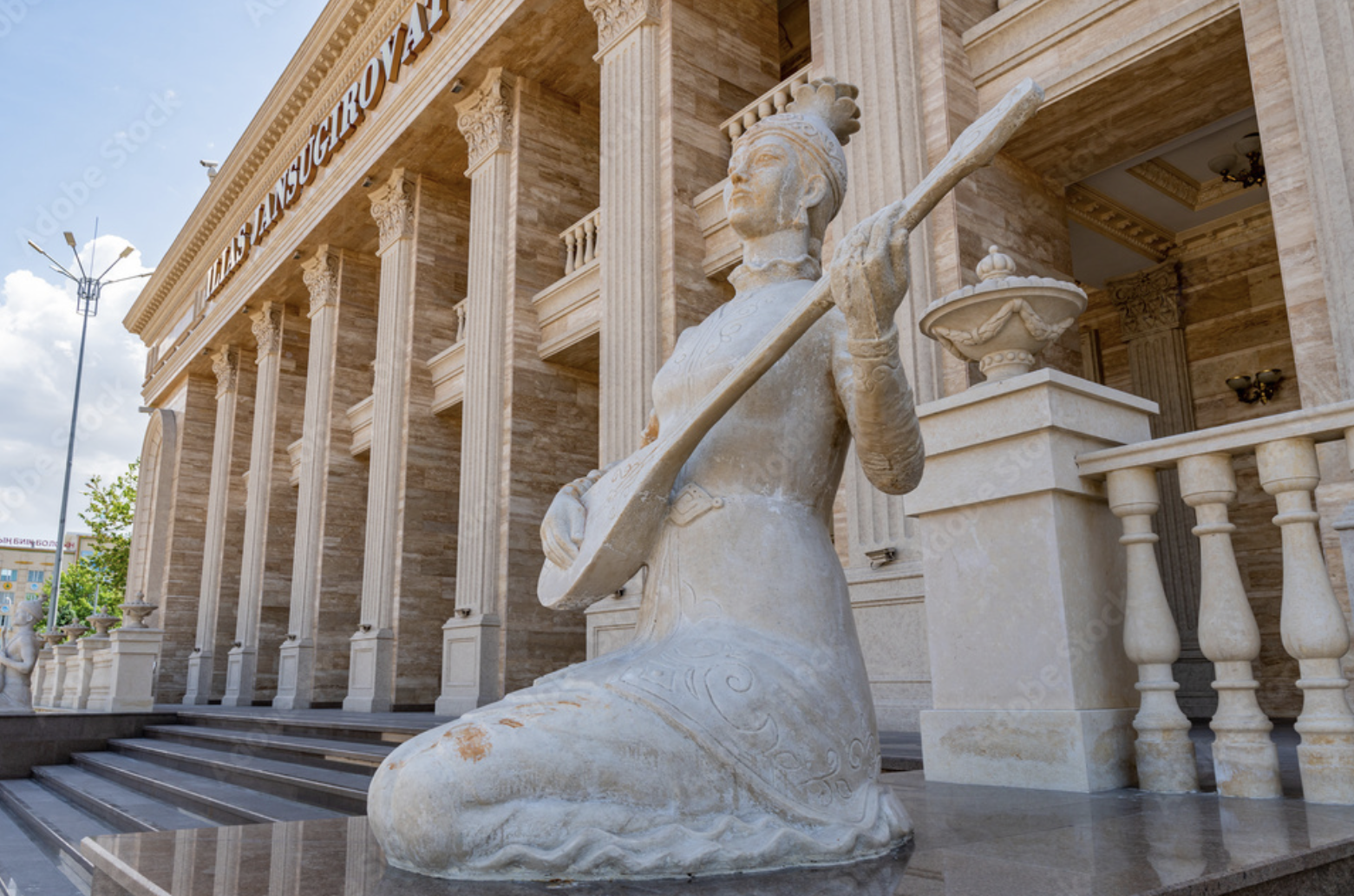
Zhansugurov Palace of Culture. Photo credit: stock.adobe.com.
The palace offers a work space for the Suyunbay Almaty Regional Philharmonic, a veterans’ choir, and the Azheler (grandmothers in Kazakh) national ensemble.
On the opposite side of the road, the Zhansugurov Literary Museum offers guided tours showcasing the poet’s life and literary activities. Both landmark sites are located on Abai Street.
Biken Rimova Drama Theater
Taldykorgan Drama Theater, named after Biken Rimova, a prominent Kazakh actress, was established in 1975.

Biken Rimova Drama Theater. Photo credit: yandex.ru.
The theater opened with the Kozy Korpesh—Bayan Sulu premiere performance on the 90th anniversary of the Kazakh actress. Since 2011, the love story has become the celebration of the Day of Lovers for Kazakhstan.
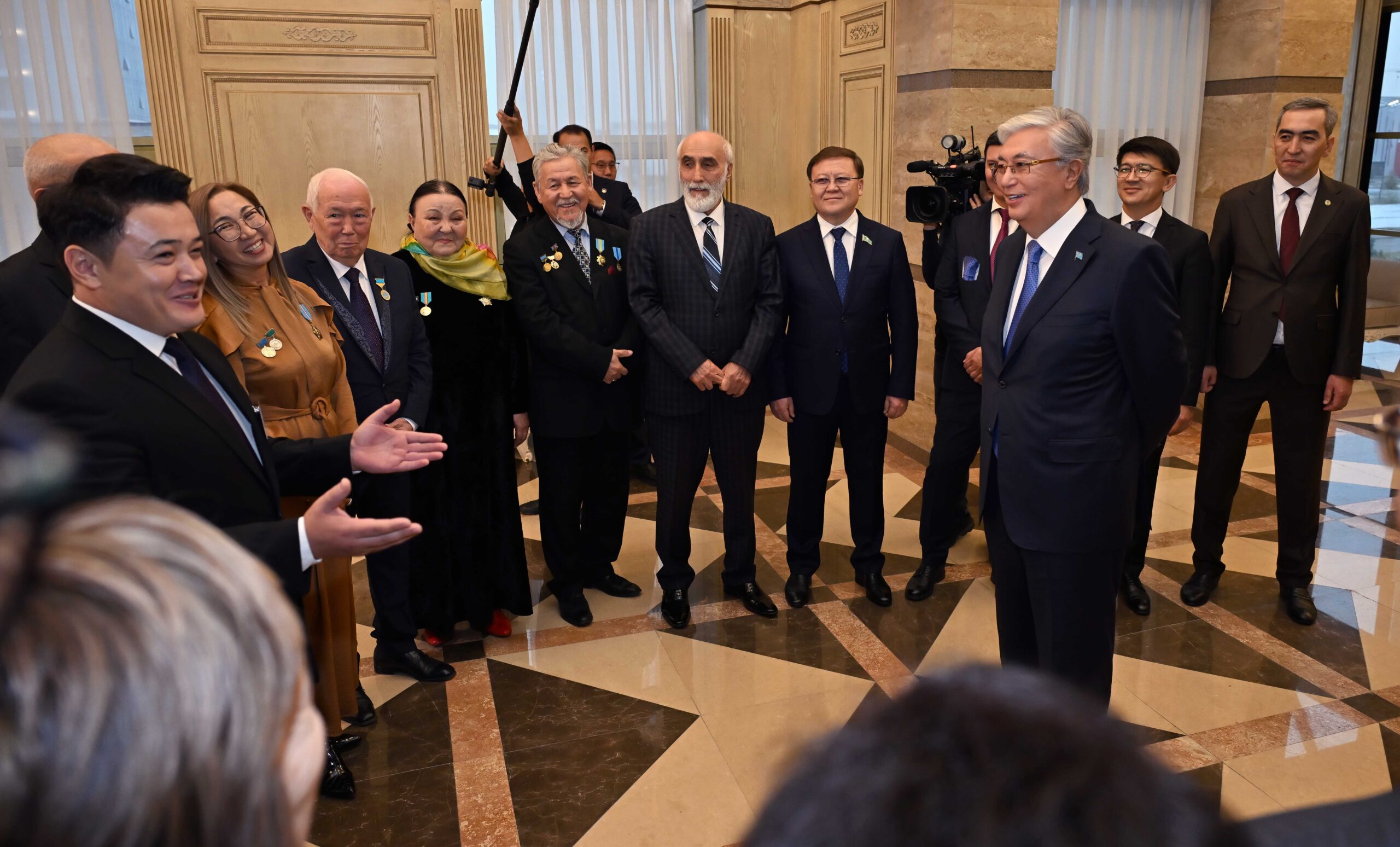
President Tokayev in the Biken Rimova Drama Theater during his visit to Talkdykorgan last year. Photo credit: Akorda.
Rimova portrayed over 170 roles in performances written by Kazakh and foreign playwrights on the stage of the Almaty-based Auezov Drama Theater.
The Zhetisu monument
While traveling around the city, one must notice an unusual monument that symbolizes the seven rivers of the region.
Prior to its construction, this spot was taken by another architectural structure representing socialism. It became dilapidated and rusted afterward. Later, on the 20th anniversary of Kazakhstan’s independence, the authorities replaced it with a 20-meter-high pillar—the Zhetisu monument.

The Zhetisu monument. Photo credit: dzen.ru.
The historical name of Zhetisu (seven rivers in Kazakh) derives from the rivers that flow into Lake Balkhash. Only five of them exist today: the Ayagoz River, Lepsy River, Aksu River, Karatal River, and Ili River.
This area is of special significance for historians in terms of preserving historical heritage. Researchers continue to study petroglyphs, which are predominantly found in the Zhetisu Region, specifically near the Kazakh cities of Zhetisu and Taldykorgan.
The Ush Ata monument and Kanbabay Batyr monument
The city’s architectural elements, such as the Kanbabay Batyr monument and the Ush Ata (three elders in Kazakh) monument, deserve equal attention.
The Kanbabay Batyr monument was established in 2009. Kanbabay Batyr is one of the legendary Kazakh heroes of the 18th century who resisted the Jungar invasion of Kazakh lands.

Kanbabay Batyr monument. Photo credit: 2gis.kz.
The same goal was pursued by Yeskeldy bi (bi – noble judge in Kazakh history), Balpyk bi, and Kabylis zhyrau (kui performer), three prominent figures in the history of Kazakhstan who made a significant contribution to the defeat of the Jungar army. The monument was erected in 2006.
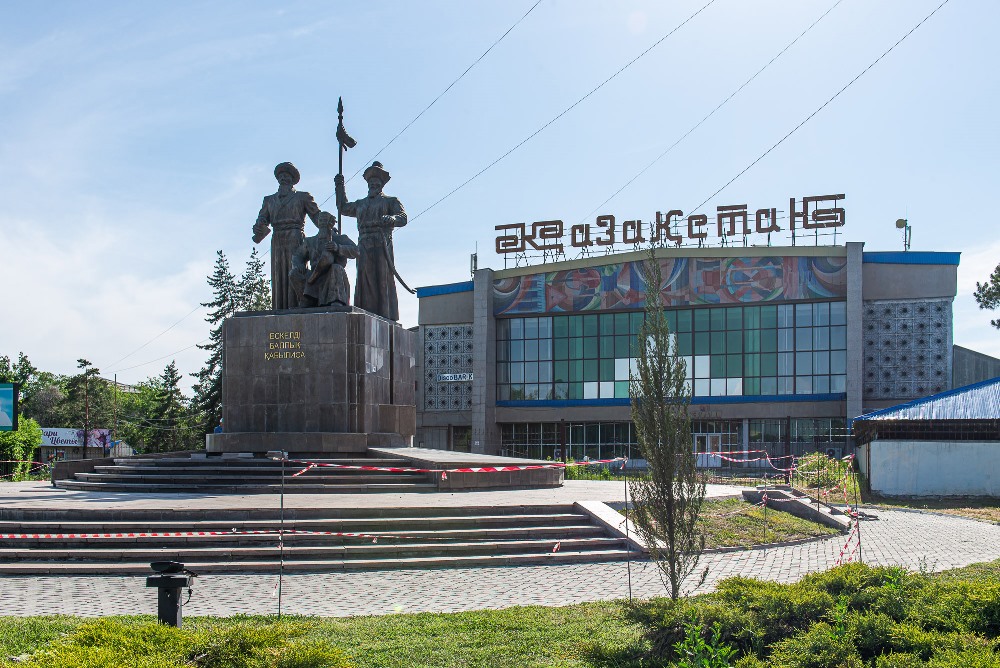
The Ush Ata monument. Photo credit: inbusiness.kz
Lately, local authorities have paid particular attention to the city’s sustainable development by modernizing industrial facilities and implementing greener solutions. Recent initiatives of the government are centered around the well-being of people, aimed at improving healthcare and ensuring comfortable living conditions.


